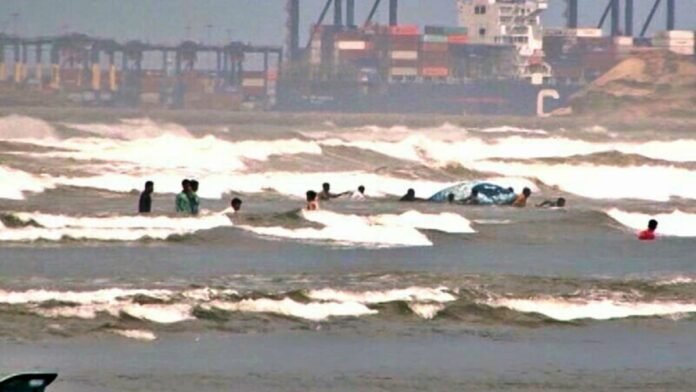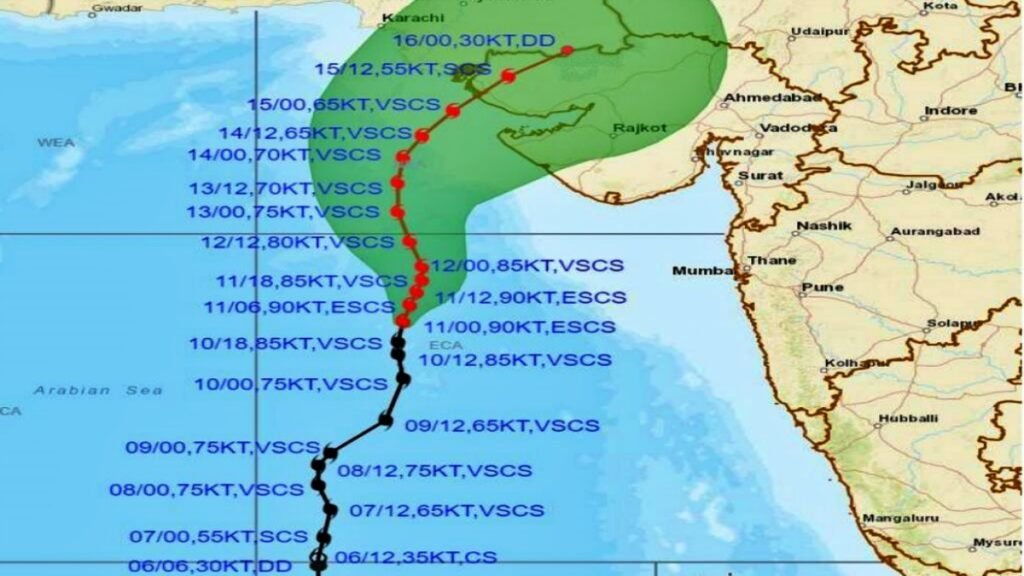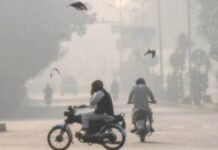
Islamabad: Pakistan largely escaped the intensity of Cyclone Biparjoy, which on Friday weakened after hitting the coast in Gujarat. A cyclone warning was issued for the people of the coastal town of Keti in Sindh province and they are now returning to their homes. Now the Pakistan Meteorological Department (PMD) has said that Cyclone Biparjoy has weakened into a ‘Very Severe Cyclonic Storm (VSCS)’ into a Severe Cyclonic Storm (SCS).
The PMD in its fresh advisory has said that the Very Severe Cyclonic Storm Biparjoy has weakened into a Severe Cyclonic Storm after crossing the coast of the Indian state of Gujarat (near Jakhau port). It is very likely to further weaken into a Cyclonic Storm (CS) by this afternoon and further into a low-pressure area by evening, the advisory said. Climate Change Minister Sherry Rehman tweeted, “Pakistan was prepared, but was largely spared the intensity of the cyclone. Coastal areas like Sujawal in Sindh were inundated by sea waves, but most of the people were evacuated to safer places.
He thanked all the officials concerned for coordinating the rescue operation. He said the officials would hold a meeting today to discuss the issue of sending back the affected people to their homes.
The Sindh government had evacuated 67,367 people from various vulnerable districts and set up 39 relief camps for their stay. Meanwhile, the city of Karachi once again survived the cyclone, rekindling the age-old debate of whether the city was once again saved by its patron saint.

According to a media report, some local people of Karachi, and especially the followers of Dargah Abdullah Shah Ghazi, believe that due to the miracle of the Sufi saint buried here, Karachi has survived the storm.
Dr. Monalisa, a professor in the Department of Earth Sciences at Quaid-e-Azat University, told the BBC that Karachi lies on the boundary of three plates (Indian, Eurasian, and Arabian), which are natural barriers to any storm.





















































